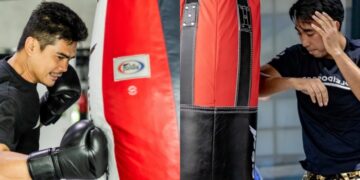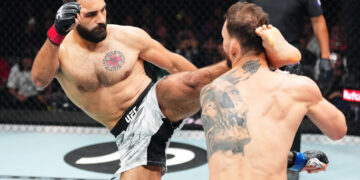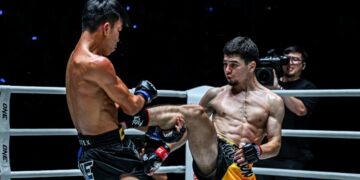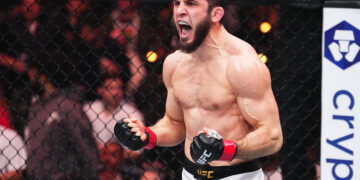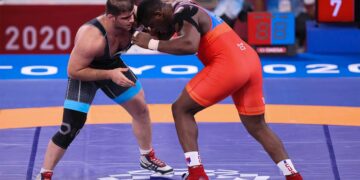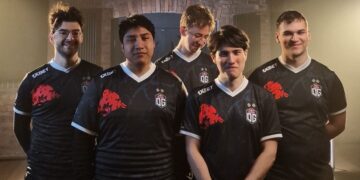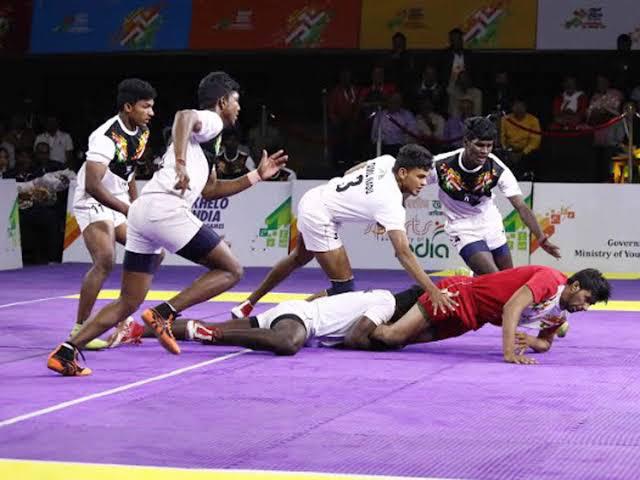
You’ve tried every diet there is out there: keto to force your body to use fat as its primary source of energy, intermittent fasting to improve testosterone production, even that questionable “caveman” phase where you ate nothing but grilled meat and berries.
It’s common for martial arts fighters to try anything they can get their hands on so they can train harder, recover faster, and perform optimally during competitions. A growing number of fighters are now turning toward nutrigenomics to give them an edge.
Nutrigenomics is the science of tailoring your nutrition based on your genetic code. Think of it as a genetic cheat sheet that lets you know what to consume to improve athletic performance and what to avoid. Understanding how your unique genetics impact how your body processes nutrients can positively impact many aspects of fighter training.
What Is Nutrigenomics?
Nutrigenomics studies how your genes interact with nutrients. Certain genetic variants affect how your body metabolizes carbs, processes caffeine, or fights inflammation. For example, while one fighter might thrive on a high-carb diet, another (thanks to their DNA) might gain more fat.
Studies show that personalized nutrition plans improve athletic performance more than generic diets. For fighters, that could mean sharper reflexes in the fifth round of a fight or bouncing back faster after a long BJJ roll.
Imagine two fighters: one eats a carbohydrate-heavy meal a few hours before training and feels unstoppable, while the other experiences a sugar crash. Their different experiences are likely dictated by how efficiently their bodies convert carbs into energy. Nutrigenomics identifies these differences so you can stop guessing and start optimizing your diet.
Why Fighters Should Look Into Nutrigenomics
Your genes influence three critical areas for combat athletes:
- Energy Production: Genetics affects how well your body converts nutrients into energy.
- Recovery Speed: Shorter recovery times allow you to get more training done. Your genetics impact how your body processes inflammation.
- Longevity: How your nutrition complements your genetics impacts your longevity as a fighter.
Even minor tweaks to your diet to better suit your genetic profile can yield significant results. For example, athletes with a vitamin D receptor gene variant need two to three times more sunlight or dietary vitamin D to maintain optimal levels.
The Science Of “Fighter Genes”
Researchers have pinpointed some of the genes that impact athletic performance. Here’s a breakdown:
- CYP1A2: This gene determines how fast you metabolize caffeine. “Slow metabolizers” may crash hard after pre-workout coffee, while “fast metabolizers” get a clean energy boost.
- TNF-Alpha: Variants here affect the inflammation response. You might need extra omega-3s to avoid constantly feeling like you need an ice pack if you’re vulnerable to inflammation.
- ACTN3: Dubbed the “speed gene,” ACTN3 influences whether you’re built for endurance or explosive power. Most elite fighters have the “power” variant.
But wait—there’s more. Genes like PPAR-alpha dictate how well your body burns fat for fuel (key for fighters cutting weight), while SOD2 affects antioxidant production to combat oxidative stress from intense training.
How To Get Started
Finding out your genetic profile isn’t as complicated as you might think. Here are the steps involved:
- Take A DNA Test: Companies like 23andMe, 24Genetics, or DNAFit offer affordable kits that analyze fitness and nutrition-related genes. Put a sample in a tube, mail it off, and wait for your genetic report card. Look for tests that cover sports-specific markers like vitamin needs, risks assessment, and macronutrient metabolism.
- Interpret Results With A Pro: A sports nutritionist can translate your results into actionable tips like “cut back on caffeine.” Some testing companies provide consultations or detailed guides if you don’t have access to a nutritionist.
- Customize Your Plate: Use your genetic insights to tweak your macros, micronutrients, and meal timing. For example, if your AMPD1 gene suggests poor ATP recovery (the energy currency of cells), prioritize creatine-rich foods like red meat or supplements.
Practical Tips For Genetic Overachievers
- You’re A Slow Caffeine Metabolizer: Skip the pre-training cold brew. Try green tea instead. It’s lower in caffeine and packed with antioxidants to combat fight-induced stress. The L-theanine in green tea promotes focus without the jitters.
- Your Genes Dislike Carbs: Focus on slow-digesting carbs (sweet potatoes, quinoa) and pair them with healthy fats like avocado or nuts to avoid energy crashes.
- Inflammation Runs In Your Family: Load up on turmeric, cherries, and fatty fish. Studies show that consuming omega-3s considerably reduces muscle soreness.
- You’re A “Power” Athlete (ACTN3): Prioritize explosive training and slightly higher protein intake (1.6–2.2g per kg of body weight) to support muscle repair.
How Your Genes Impact Recovery
Ever notice how some fighters bounce back like they’re made of rubber after intense training sessions, while others have sore joints that creak like a rusty gate? Blame (or thank) genes like COL5A1, which affects tendon elasticity, or IL-6, which regulates muscle repair.
If your DNA says “high injury risk,” prioritize collagen-rich foods (bone broth, fish, eggs, etc.) and mobility work. And no, chugging a protein shake post-training isn’t enough. Your genes might need extra leucine or vitamin C to rebuild muscle.
Nighttime recovery matters, too. Variants in the CLOCK gene influence circadian rhythms, meaning you might recover better with an earlier bedtime or specific bedtime snacks.
Do you want to spar like a 25-year-old when you’re 40? Telomeres (the protective caps on your DNA) while shortens with age, diets rich in antioxidants (like berries and dark chocolate) can help slow the process and support longevity.
Common Nutrigenomics Myths (Debunked)
- “My DNA Dictates My Destiny”: Nope. Even if you’re prone to inflammation, smart nutrition can mitigate risks.
- “All DNA Tests Are Created Equal”: Some tests focus on ancestry, not athletic performance. Choose tests that analyze sports-related genes like HFE (iron metabolism) or VDR (vitamin D receptors).
- “This Is Only For Pros”: Amateurs benefit too. Knowing your caffeine tolerance or carb needs can lead to more productive training sessions.
The Bottom Line
Nutrigenomics won’t magically turn you into Superlek. But it can boost your endurance, shorten recovery times, and make your training sessions more productive. Why rely on guesswork while creating a diet plan when a DNA test can tell you precisely what your body needs? Consider taking the guesswork out of your nutrition and building a plan that’s truly tailored to you.
You may also like:
The Low-Carb Fighter: Can You Train Hard On A Ketogenic Diet?
Whether you’re hitting the heavy bags in Muay Thai, rolling hard in Brazilian Jiu-Jitsu (BJJ), sharpening your jab-cross combos in boxing or just hitting the gym for a quick workout, one thing’s for sure: your…
When working out, the ketogenic diet has enjoyed lots of popularity in recent years as a growing number of people swear it has transformed their lives. It’s an easy diet for most to get behind;…
The MIND diet, short for Mediterranean-DASH Diet Intervention for Neurodegenerative Delay, is a nutrition plan designed to promote long-term cognitive health. It combines Mediterranean and DASH (Dietary Approaches to Stop Hypertension) diet elements to lower…
Understanding caloric intake is essential for managing health, whether you’re maintaining weight, losing fat, or building muscle. Calories measure the energy food provides to our bodies and are critical to all our bodily functions. In…
The holiday season is a time for celebration, connection, and indulgence. However, it often comes with an unwelcome side effect: a few extra pounds. If you’ve gained weight over the holidays, don’t worry—this article will…
Protein shakes are marketed as dietary supplements that help you meet your recommended daily protein intake. The main selling point of protein powders and shakes is that they’re a quick and convenient protein source for…
Everyone has a natural fighting style. Some instinctively look to bombard opponents with volume, while others prefer a more cautious approach. Some people feel more comfortable throwing strikes at attackers, while others prefer to wrestle…
Ask any coach or seasoned fighter, and they’ll tell you the same thing: your punches are only as effective as your footwork. Most people think boxing is all about fast jabs and powerful knockouts. While…
Every year, athletes embark on their Brazilian Jiu-Jitsu journey filled with hope to make their dreams come true and make history. With a month coming before the World IBJJF Jiu-Jitsu Championship 2025, grappling fans can’t…
Your environment significantly influences what works and what doesn’t in boxing. Even something that might seem insignificant to casual boxing fans, like the size of a boxing ring, influences which tactics work best. Smaller rings…
Gravity isn’t your friend when you’re defending against takedowns. It’s working alongside your opponent to get you on the ground. Fortunately, you also have an ally: the cage. The cages used in modern MMA are…
The back mount is the most dominant position in BJJ. It allows you to set up your attacks without your opponent peripherally seeing how you set them up. Because of this, opponents will rely on…







